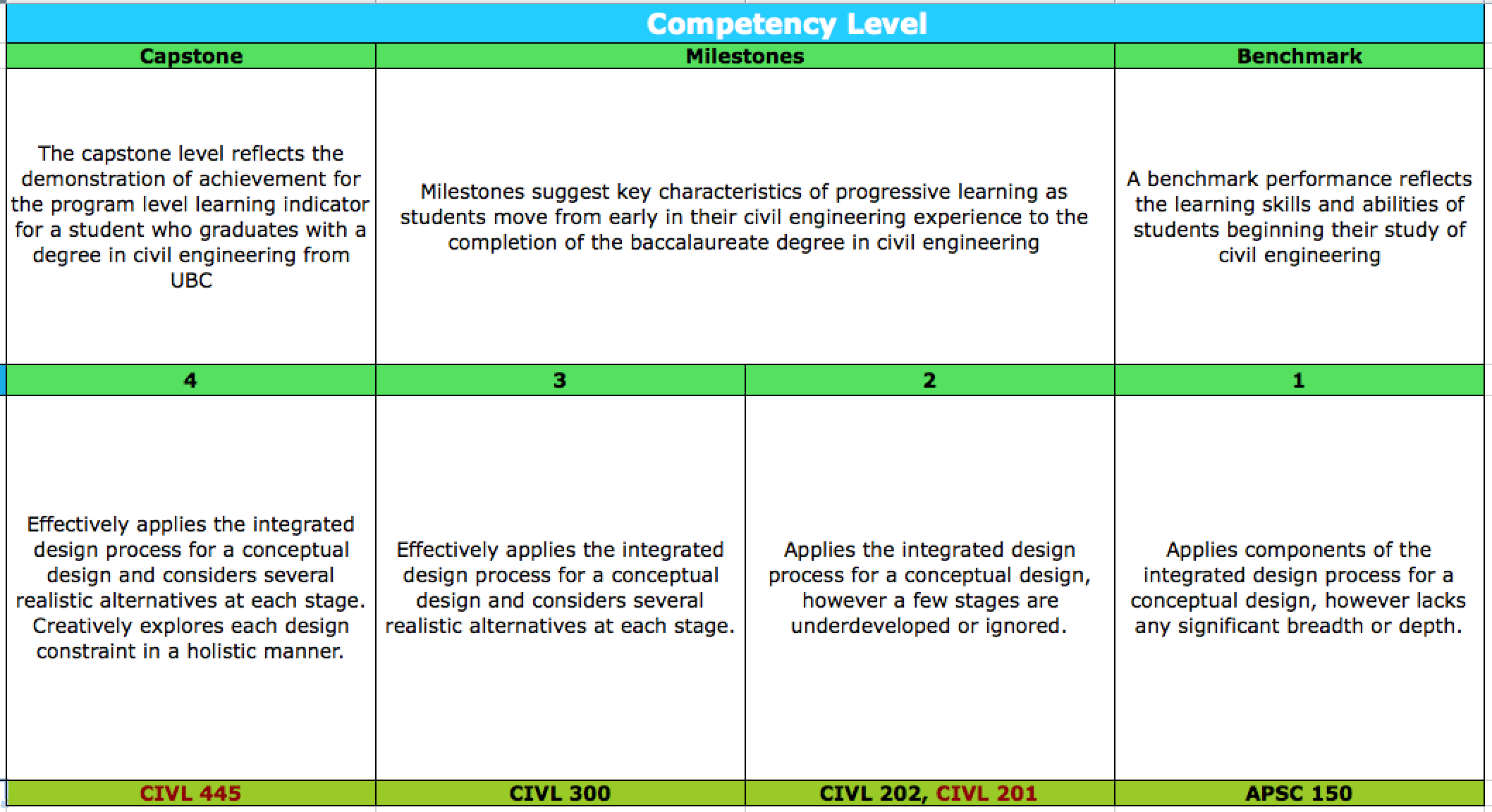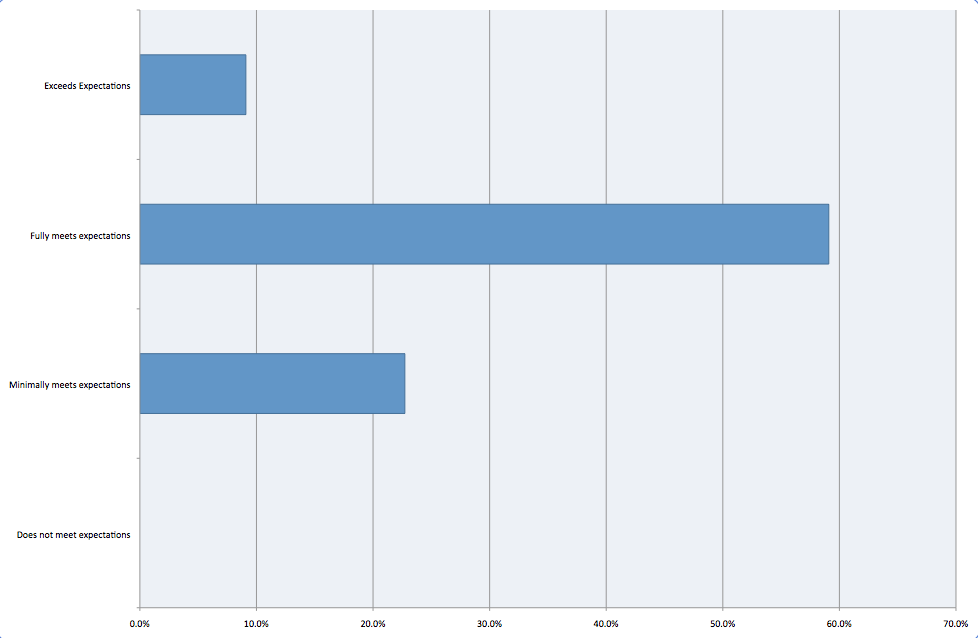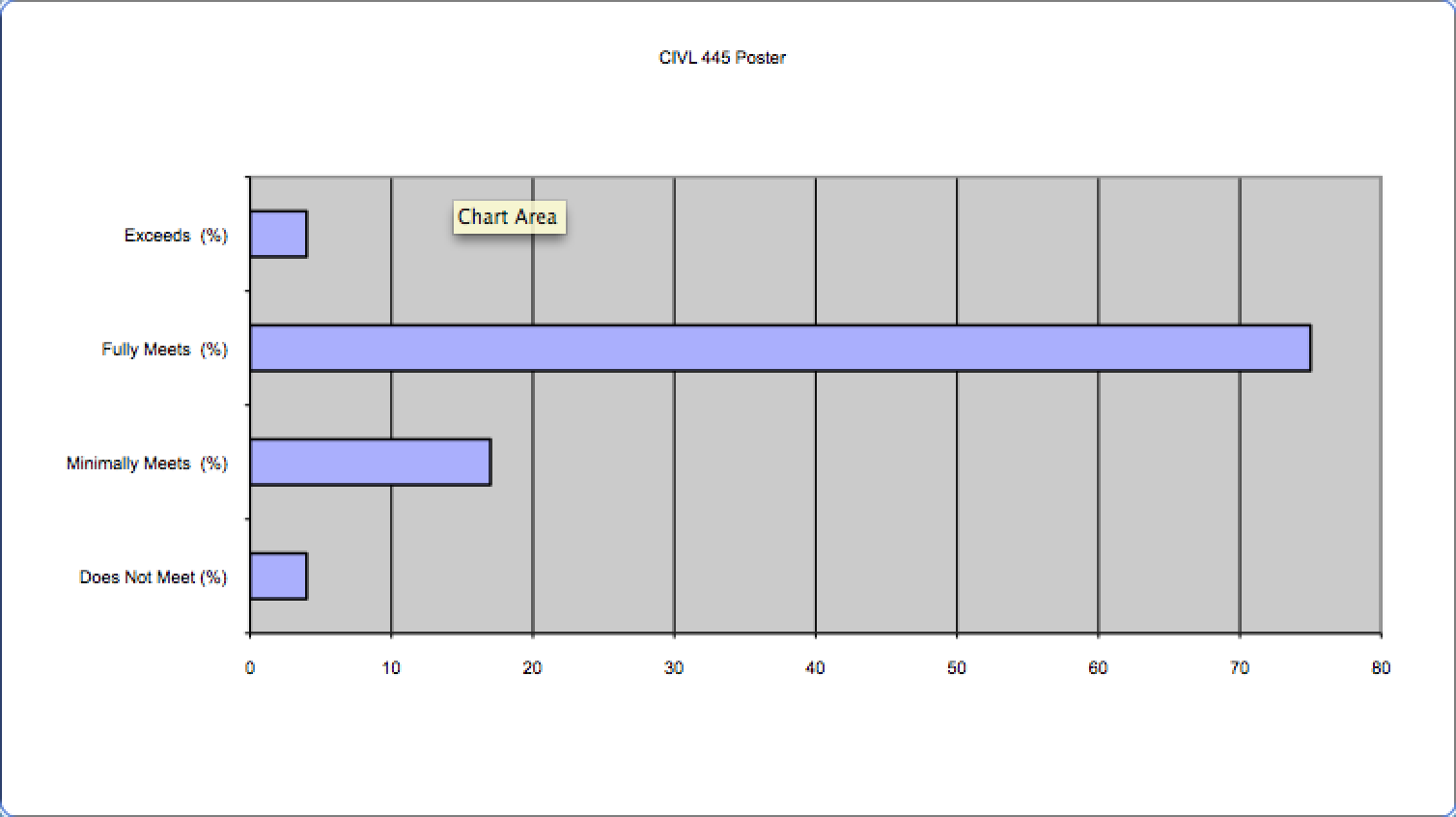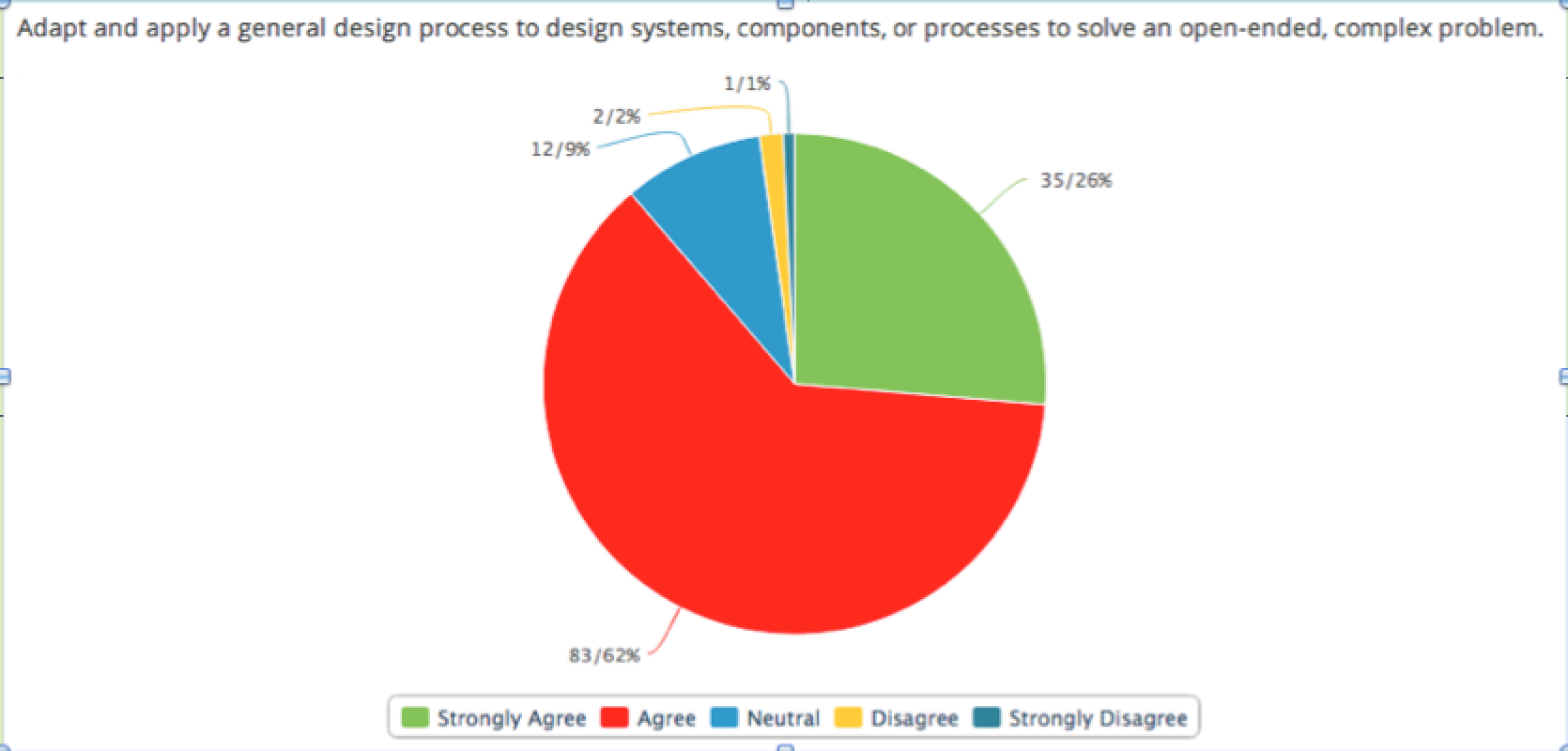4.0 DESIGN:
Students graduating with an engineering degree from the University of British Columbia possess the ability to design solutions for complex, open-ended engineering problems and to design systems, components or processes that meet specified needs with appropriate attention to health and safety risks, applicable standards, and economic, environmental, cultural and societal considerations.
Civil Engineering Program Level Learning Indicator
4.2 Design Process:
Students graduating with a civil engineering degree will be able to define and scope the design problem, generate the goal statement for the design, identify negotiable and non-negotiable design criteria (including those related to political, cultural, mental and physical health, community, ecosystem, and economic sustainability), ideate in a team and in a design charette, compare alternative design options, and recommend a conceptual design.
Assessments of Student Competency:
LEVEL 2 (MILESTONE) COMPETENCY ASSESSMENT TOOL: CIVL 201 Interim Oral Presentation of a Conceptual Design
- Assessment Year: 2013-2014, Term 1
- Course Assignment – CIVL 201-13 interim presentation
- Number of students assessed: 20 teams of 6 students each
- Histogram Data Sheet: CIVL 201_ConceptualDesignPresentation
Histogram: Level of Achievement vs Percent of Student Teams
80% of Student Teams Fully Meet or Exceed the Level 2 Competency Expectations as Expressed by this Learning Assessment
LEVEL 4 (CAPSTONE) COMPETENCY ASSESSMENT TOOL: CIVL 445 Final Conceptual Design Poster
- Assessment Year: 2012-2013, T1
- Course Assignment – Design poster assignment
- Number of students assessed: 25 teams of 5 or 6 students
- CEAB Learning Assessment Criteria
- Histogram Data
Historgram: Level of Achievement vs Percent of Student Teams
77% of Student Teams Fully Meet or Exceed the Level 4 (i.e. Capstone) Competency Expectations as Expressed by this Learning Assessment
GRADUATING STUDENT SELF-EFFICACY SURVEY:
- Assessment Year: 2012-2013, T2
- Response rate: 85%
- Validity: preliminary
I am able to adapt and apply a general design process to design systems, components, or processes to solve an open-ended, complex, problem.
88% of 4th year student respondents agree or strongly agree with the statement.



